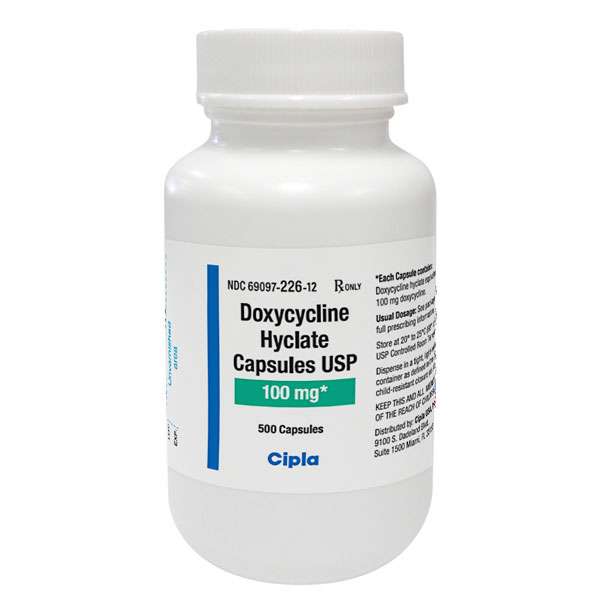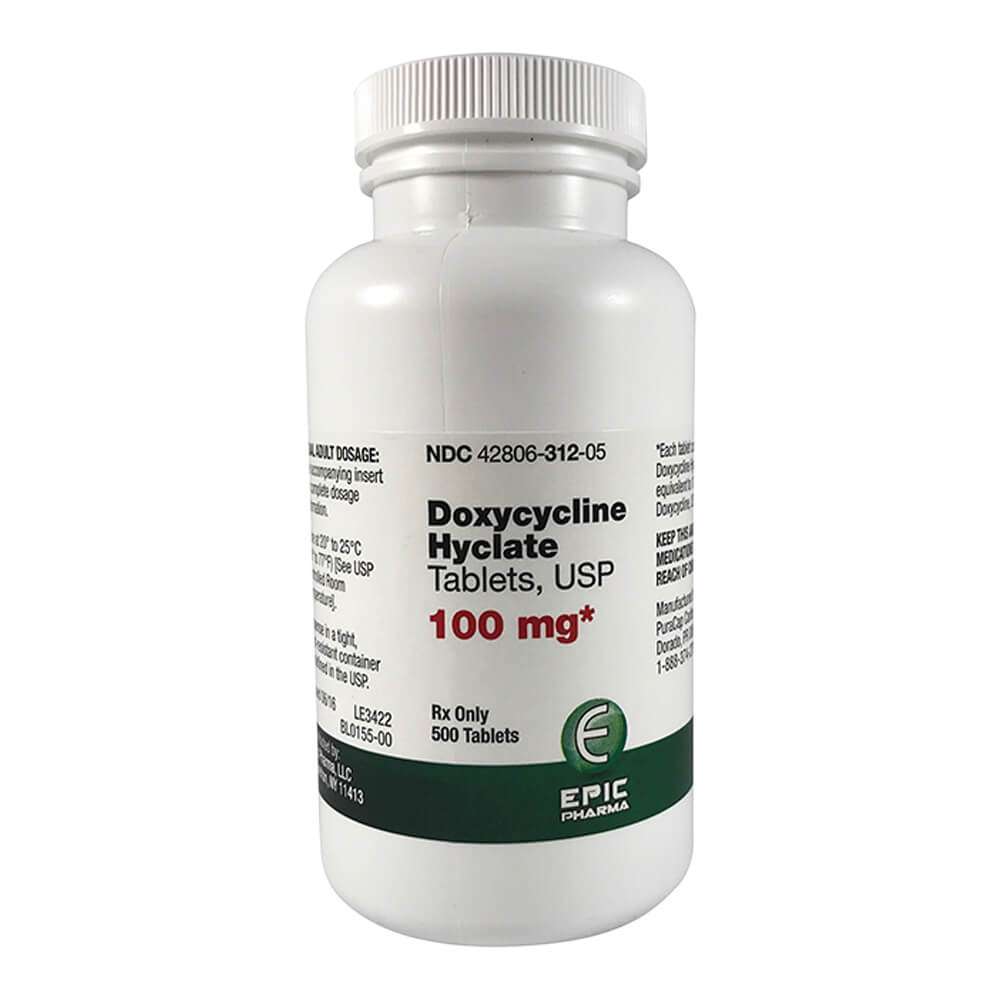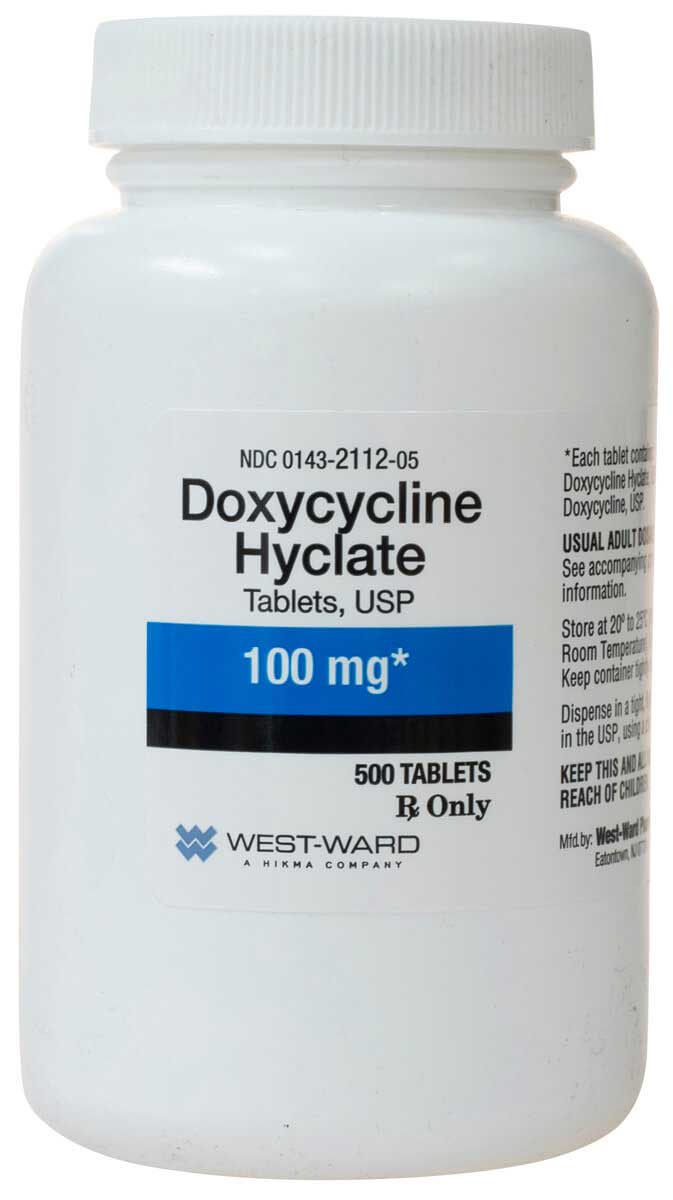What Causes Lyme Disease In Dogs
Dogs contract Lyme disease through the bite of infected ticks. These ticks contain the bacteria Borrelia burgdorferi, which is a type of organism known as a spirochete.
Common Causes
There are at least four species of ticks in the world known to carry Lyme disease:
-
Ixodes pacificus
-
Ixodes ricinus
-
Ixodes persulcatus
In the United States, the most common source of transmission is the Deer Tick or Black-Legged Tick, scientifically known as Ixodes pacificus on the West Coast and Ixodes scapularis on the East Coast. In Europe, the Ixodes ricinus and Ixodes persulcatus ticks carry Lyme disease.
These ticks are tiny, which can make them hard to see or feel on your dog, and all stages of the tick can carry and spread the disease, although adult ticks tend to be the most infectious. It typically takes 24 to 48 hours after attaching to a host for the tick to spread the Lyme-causing bacteria, although transmission of disease can sometimes occur much more rapidly.
Certain areas are more prone to ticks than others. Wooded or grassy areas and areas with large tick populations pose the highest risk of infection. Ticks tend to be most active in the spring and fall when they are actively seeking hosts, which increases the risk of Lyme transmission. However, recent evidence indicates that ticks are also active in winter, as long as the temperature is above freezing.
Dosage Of Doxycycline For Dogs
The dosage of doxycycline for dogs will vary depending on your dogs health and condition. While the Merck Veterinary Manual recommends an oral dosage of 5-10 mg/kg per day, you should not attempt to adjust the dosage without the guidance of your veterinarian. Changing your dogs medication can lead to antibiotic resistance, which is dangerous for your dog and may also result in a longer recovery time.
If you have questions about your dogs dosage, contact your veterinarian. As with any antibiotic, make sure your dog finishes the full course of the drug, even if your dog is showing signs of recovery.
Antibody Titers For Lyme Disease
Antibody titers can provide helpful diagnostic information, although antibodies cannot be detected for 4 to 6 weeks after the bacteria have entered the dog.3,6
Diagnostic tests for antibodies to B burgdorferi are available as immunofluorescence assay, enzyme-linked immunosorbent assay , Western blot, and polymerase chain reaction. ELISAs are available for in-house screening.2 Western blot testing is the gold standard and can be used if the ELISA result and the clinical presentation are discordant .1
Because most infections in dogs are subclinical, infection must be differentiated from previous exposure.1,3 In the absence of clinical signs, a positive antibody test result does not indicate disease 1 rather, a positive test result indicates only previous exposure to Borrelia bacteria.
Recommended Reading: Where Can You Get A Lyme Disease Test
How Long Does A Tick Need To Be Embedded For It To Transmit Disease
The longer a tick is attached, the higher the risk of transmission. Although Lyme disease is not commonly transmitted when ticks are attached for less than 24 hours, the risk of Lyme disease posed by those bites is not zero. There may be other factors that contribute to disease transmission in short duration attachments. In addition, there are other disease-causing bacteria and viruses carried by blacklegged ticks that are known to be transmitted in less than 24 hours.
Dont Miss: Ozone Therapy For Chronic Lyme
Quantity Of Research Available

A total of 211 citations were identified in the literature search. Following screening of titles and abstracts, 152 citations were excluded and 59 potentially relevant reports from the electronic search were retrieved for full-text review. Two potentially relevant publications were retrieved from the grey literature search for full text review. Of these potentially relevant articles, 55 publications were excluded for various reasons, and six publications met the inclusion criteria and were included in this report. These comprised one systematic review, one non-randomized study, and four evidence-based guidelines., presents the PRISMA flowchart of the study selection. Additional references of potential interest are provided in .
Recommended Reading: What’s Lyme Disease Look Like
Video Answer: Lyme Disease In Dogs
When a dog is exposed to B.
burgdorferi, his immune system will make antibodies in response to the outer surface proteins on the spirochete.
Testing positive for Lyme does not mean that the dog actually has or will develop clinical signs of Lyme disease it just means that the dog has been exposed.
In the past, it may have been difficult for dogs to survive Lyme disease due to the inability to diagnose the disease.
If your dog does contract Lyme disease, however, they are likely to exhibit the symptoms listed above.
These symptoms are caused by the Borrelia burgdorferi bacterium in the bite of an infected tick.
Lyme disease in dogs is curable, however, this may depend on each case and at what stage of the disease the dog receives treatment during.
Most dogs that are diagnosed with Lyme disease will be given a prescription of doxycycline, which is the most common type of antibiotic used to treat this condition.
Doxycycline Dosage For Dogs
The recommended Doxycycline dose for dogs is between 2.2 and 4.5 mg per pound of body weight . The exact dose and length of treatment depend on the underlying condition.
For example, for dogs with gum disease and infection, Doxycycline use is limited to 5 to 7 days. However, the treatment may last for 30 or 45 days in dogs with respiratory infections or tick-borne diseases.
In case you forget dosing your dog, you have two options give the missed dose as soon as you remember or skip it entirely and give the next dose as scheduled.
Doxycycline is a fast-acting medication that starts working in as little as 1 to 2 hours in dogs. However, it usually takes a couple of days before any visible improvements. It is available in the form of tablets, capsules, and liquids. There is also injectable Doxycycline, but it stings a lot and is not suited for long-term use.
When dosing your dog with Doxycycline, you can reduce the risk of GI side effects and upset stomach by mixing it with food .
If using tablets without food, make sure your dog drinks at least 6 ml of water immediately after swallowing the drug. This is because Doxycycline tablets can easily get lodged in the esophagus and cause ulcers.
Finally, a word to two on proper storage. Always keep the Doxycycline in an air-tight container, at room temperature, away from light, and out of your dogs reach. Oral suspensions must be discarded 14 days after the bottle is opened.
Read Also: Lyme Literate Doctors In Nh
Recovery And Management Of Lyme Disease In Dogs
You can expect to see improvement in mild cases of Lyme disease in dogs 3 to 5 days into antibiotic therapy. Severe cases may take longer and can be fatal if kidney damage is too advanced.
Antibiotics do not always eliminate Lyme disease. Dogs infected with Lyme disease will be prone to recurrence of the infection in the future, but antibiotics can be used again to treat the condition.
Owners can help manage their dogs condition by complying with their veterinarians advice and following the instructions on the medication. Learning to recognize the signs of Lyme disease will also help owners get their dogs started on medication as soon as possible to prevent serious side effects in the future.
Topic 7a: Tick Control
| Chimeric recombinant | Vanguard crLyme | Yes |
The routine use of Bb vaccinations in Bb-endemic areas in North America was recommended by 3/6 panelists, for seronegative as well as healthy nonclinical, nonproteinuric seropositive dogs, because no natural immunity occurs from previous infection, partly because of the ability of the spirochete to âhideâ from the immune system in synovial membranes, down-regulating their immunogenic surface proteins, and because of the existence of many strains for which there is no cross-reacting immunity.
Statement: Panelists agreed that all dogs in Bb-endemic areas should receive adequate tick control year-round, preferably with a product that prevents tick attachment or rapidly kills ticks during early feeding. Consensus for vaccination was not reached. Three of 6 panelists recommend vaccination, stating: healthy Bb-seronegative dogs in North American Bb-endemic regions may be vaccinated with any of the currently available Bb vaccines and healthy Bb-seropositive dogs in those regions may be vaccinated if the risk of reinfection is high. It is not recommended to vaccinate sick or proteinuric dogs .
Also Check: Stem Cell Treatment For Lyme
Why Are Antibiotics The First Line Of Treatment For Lyme Disease
The use of antibiotics is critical for treating Lyme disease. Without antibiotic treatment, the Lyme disease causing bacteria can evade the host immune system, disseminate through the blood stream, and persist in the body. Antibiotics go into the bacteria preferentially and either stop the multiplication of the bacteria or disrupt the cell wall of the bacteria and kill the bacteria . By stopping the growth or killing the bacteria the human host immune response is given a leg up to eradicate the residual infection. Without antibiotics, the infection in Lyme disease can evade the host immune system and more readily persist.
What Is Post Treatment Lyme Disease
Post Treatment Lyme Disease represents a research subset of patients who remain significantly ill 6 months or more following standard antibiotic therapy for Lyme disease. PTLD is characterized by a constellation of symptoms that includes severe fatigue, musculoskeletal pain, sleep disturbance, depression, and cognitive problems such as difficulty with short-term memory, speed of thinking, or multi-tasking. In the absence of a direct diagnostic biomarker blood test, PTLD has been difficult to define by physicians, and its existence has been controversial. However, our clinical research shows that meticulous patient evaluation when used alongside appropriate diagnostic testing can reliably identify patients with a history of previously treated Lyme disease who display the typical symptom patterns of PTLD.
Read Also: What Are The Signs Of Lyme Disease In A Dog
You May Like: Joint Pain After Lyme Disease
Lyme Disease In Dogs: Signs And Prevention
Kathryn E. Reif
MSPH, PhD
Dr. Reif is an assistant professor in the Department of Diagnostic Medicine/Pathobiology at the College of Veterinary Medicine, Kansas State University. Her research interests revolve around ticks and tick-borne diseases of veterinary, agricultural, and medical concerns. Research in Dr. Reifs laboratory includes studies of antimicrobial strategies to control tick-borne pathogens, tick-borne pathogen vaccine development, tick control, and studies of tick-borne pathogen transmission.
In the United States, Lyme disease is the most commonly diagnosed tick-borne disease of dogs and humans the primary causative agent, Borrelia burgdorferi sensu stricto, is transmitted via the bite of an infected blacklegged tick . The predominant vectors of B. burgerdorferi in the eastern half of the United States are Ixodes scapularis ticks, and on the Pacific coast of the United States they are Ixodes pacificus ticks. The pathogen is maintained in endemic areas through an enzootic cycle between wildlife reservoirs and Ixodes ticks. In highly endemic regions, more than 70% of local adult blacklegged ticks carry B. burgdorferi, posing a significant risk to both canine and public health. This article discusses the basic epidemiology, clinical presentation, diagnosis, treatment, and prevention of Lyme disease in dogs in the United States.
Possible Complications To Watch For With Lyme Disease

Talk to your veterinarian if you have any questions or concerns about your dogs condition.
- Some dogs who take antibiotics can develop loss of appetite, vomiting and diarrhea.
- Once infected, a dog will always have the bacteria that cause Lyme disease in his or her body. Therefore, relapses are possible, and owners should be on the lookout for unexplained fever, swollen lymph nodes, and/or lameness.
- A small percentage of dogs develop kidney failure as a result of Lyme disease. Clinical signs include vomiting, weight loss, poor appetite, lethargy, increased thirst and urination, and abnormal accumulations of fluid within the body.
Recommended Reading: What Is Early Stage Lyme Disease
How Are Dogs Tested For Lyme Disease
Diagnosis is made by a combination of history, physical signs, and diagnostics. For dogs, the two blood tests for diagnosing Lyme disease are called the C6 Test and Quant C6 test. Veterinarians perform both.
The C6 test detects antibodies against a protein called C6. Presence of the antibodies suggests an active Lyme infection. The C6 antibodies can be detected three to five weeks after an infected tick bites a dog and may be found in the bloodstream even before the dog shows signs of illness.
The next step is to do a Quant C6 test. This, along with urinalysis will help determine if antibiotic treatment is necessary.
Can My Animal Get Infected Despite Being Vaccinated
Yes. Some animals have been infected despite vaccination. The most common reasons are low or short-lasting vaccine antibodies in the individual animal. It is advisable to monitor the vaccine response annually to ensure the animal develops sufficient antibodies in response to vaccination. Vaccine antibodies can be quantified with the Lyme Multiplex assay as early as two weeks following vaccination or anytime afterwards.
Don’t Miss: Dr Gregory Bach Lyme Disease
What Are The Symptoms Of Lyme Disease
Dogs can display several forms of Lyme disease, but the most common symptoms are lameness, swollen lymph nodes, joint swelling, fatigue, and loss of appetite. In addition, serious kidney complications have been associated with Lyme disease in dogs.
Clinical signs of Lyme disease in horses include shifting-leg lameness, generalized stiffness, hypersensitivity to touch, weight loss, and poor performance. Sometimes, the bacteria can infect the central nervous system, leading to neurologic symptoms.
Reducing Future Lyme Disease Risks
Don’t Miss: How Long To Treat Lyme Disease
Patient And Public Involvement
Representatives from the Norwegian patient organisation for Lyme borreliosis were invited and participated in the early stages of planning of the BorrSci projects design and gave feedback on the drafts of the application for funding. They were also invited to continue work with the project. Inclusion to the study, implications of the intervention and time required to participate is discussed with each individual patient. Local newspapers and other media have been involved in making the project known to the public in different parts of Norway.
Etiology And Transmission Of Lyme Borreliosis In Animals
Lyme borreliosis is caused by infection with spirochetal bacteria belonging to the Borrelia burgdorferi sensu lato species complex. Within this complex, the following spirochete species are well-established causes of Lyme borreliosis in people: B burgdorferi sensu stricto , B mayonii , B afzelii , B bavariensis , and B garinii . The predominant species responsible for Lyme borreliosis in animals is B burgdorferi sensu stricto . It is unclear whether other Borrelia species within the sensu lato complex can cause Lyme borreliosis in animals. Tick vectors of B burgdorferi sensu lato are hard-shelled Ixodes ticks Ixodes spp Ixodes spp, the largest genus of the family Ixodidae, contains approximately 245 species and is highly specialized both structurally and biologically. So far as is known, all Ixodes spp have… read more . In the USA, I scapularis is the predominant vector in the Northeast and Midwest, whereas I pacificus is the predominant vector on the Pacific coast. In Europe and Asia, I ricinus and I persulcatus are the primary vectors.
Recommended Reading: What Antibiotic Is For Lyme Disease
How Do I Prevent Lyme Disease In Dogs
After your dog walks through areas with long grass or thick underbrush where ticks might be hiding, it is a good idea to check them for ticks. Removing ticks can be a tricky process, if you spot a tick on your dog, contact your vet for detailed instructions.
Lyme disease is much more serious in humans than dogs, so it is doubly important that you check yourself for ticks too.
You dog cannot give you Lyme disease, they are not a risk to you or your family. However, if they bring an infected tick into your home, it might be able to transmit the disease to you.
Finally, make sure you follow good tick prevention practices all year long. Avoid areas with tall grass or brushing through undergrowth. Ask your vet about vaccinating your dog against Lyme and check your dog for ticks every time you take them outside.
Does Treatment Immediately After A Tick Bite Negate Signs Of Early Infection

Not every tick carries B. burgdorferi. The infection rate of ticks also varies with geographic region. Therefore, treatment should not be performed based on a tick bite alone. If the tick was found on the animal it can be sent in for B. burgdorferi PCR. PCR for Anaplasma can be performed simultaneously if requested. If the tick was infected, early treatment can be considered. However, a tick must feed for at least 24 hours on an animal or human for B. burgdorferi transmission to occur. Only a serological test will confirm whether transmission of B. burgdorferi occurred and the animal was infected. Antibodies can be detected in infected animals as early as 3-4 weeks after infection. Lyme Multiplex testing is recommended after that time. Treatment can be initiated immediately afterwards if antibody levels are positive. Treatment during this early infection phase is generally very effective.
You May Like: Antibiotics Used For Lyme Disease